Designing play with heart & purpose
with Karen Katz
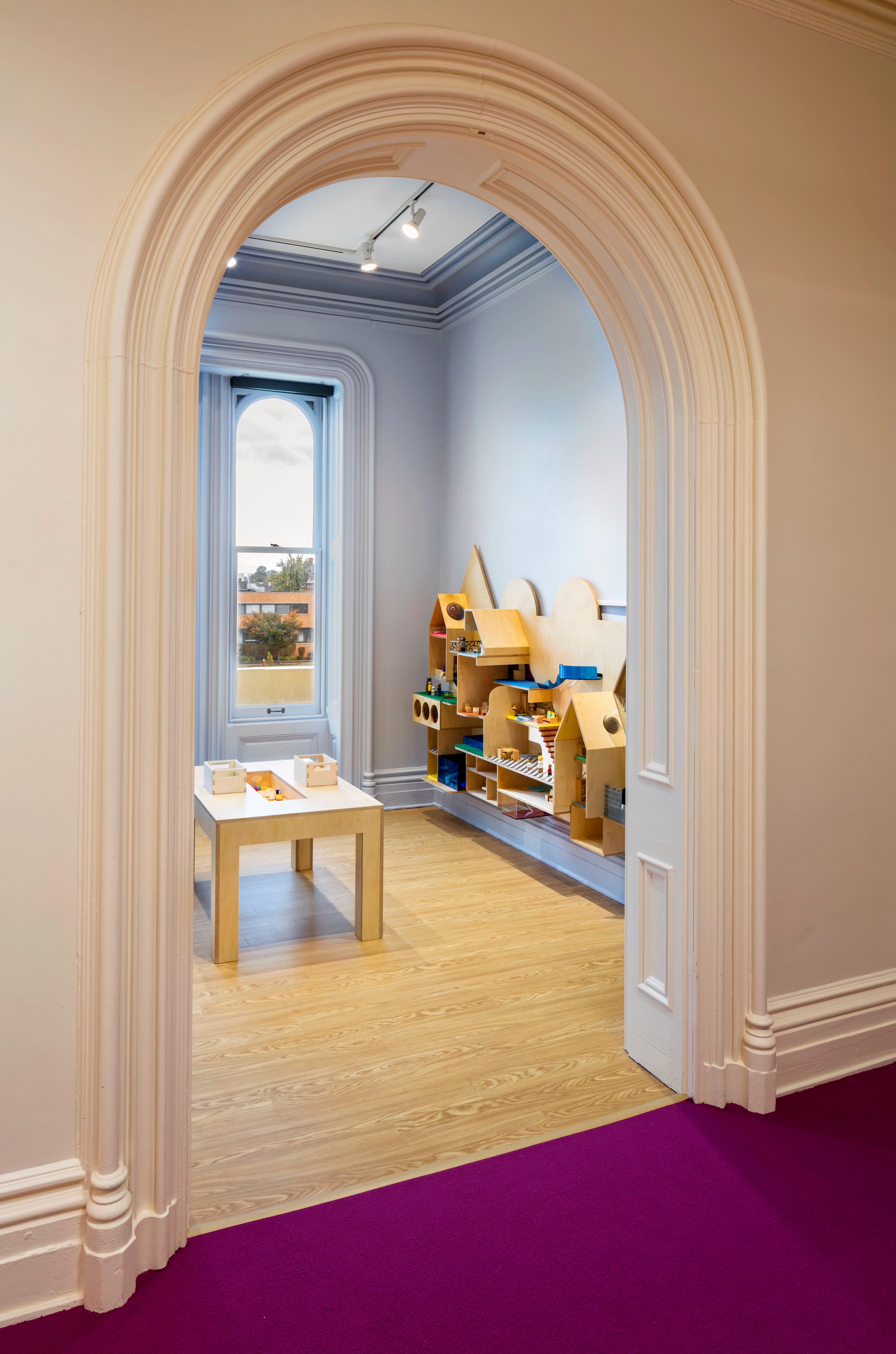
A Creative Path Forged by Curiosity
Some careers begin with a straight line. Karen Katz’s journey has been anything but. In high school, she was the “art kid” — talented, award-winning, and certain she’d find her way into a creative field. Yet when it came time to choose a college, she decided against art school. “I wanted a normal, mainstream college experience,” she recalls. “I wasn’t ready to be labeled ‘the art student.’”
At the University of Wisconsin, Karen pursued art classes on the side, but her academic focus shifted when she discovered anthropology. Suddenly, her fascination with people, culture, and history had an academic outlet. “I loved archaeology, human evolution, primatology — and I’ve always loved museums,” she says. “They’re these incredible spaces where learning and storytelling come together.”
A pivotal moment came during an internship at the Wisconsin Historical Museum. The work itself was modest — recategorizing items in the ethnographic collection — but one day, a supervisor introduced her to the museum’s exhibit designer. “She had an art table, markers, color swatches… it was like all my interests collided,” Karen says. “I realized this was a real job — and it was my job.”
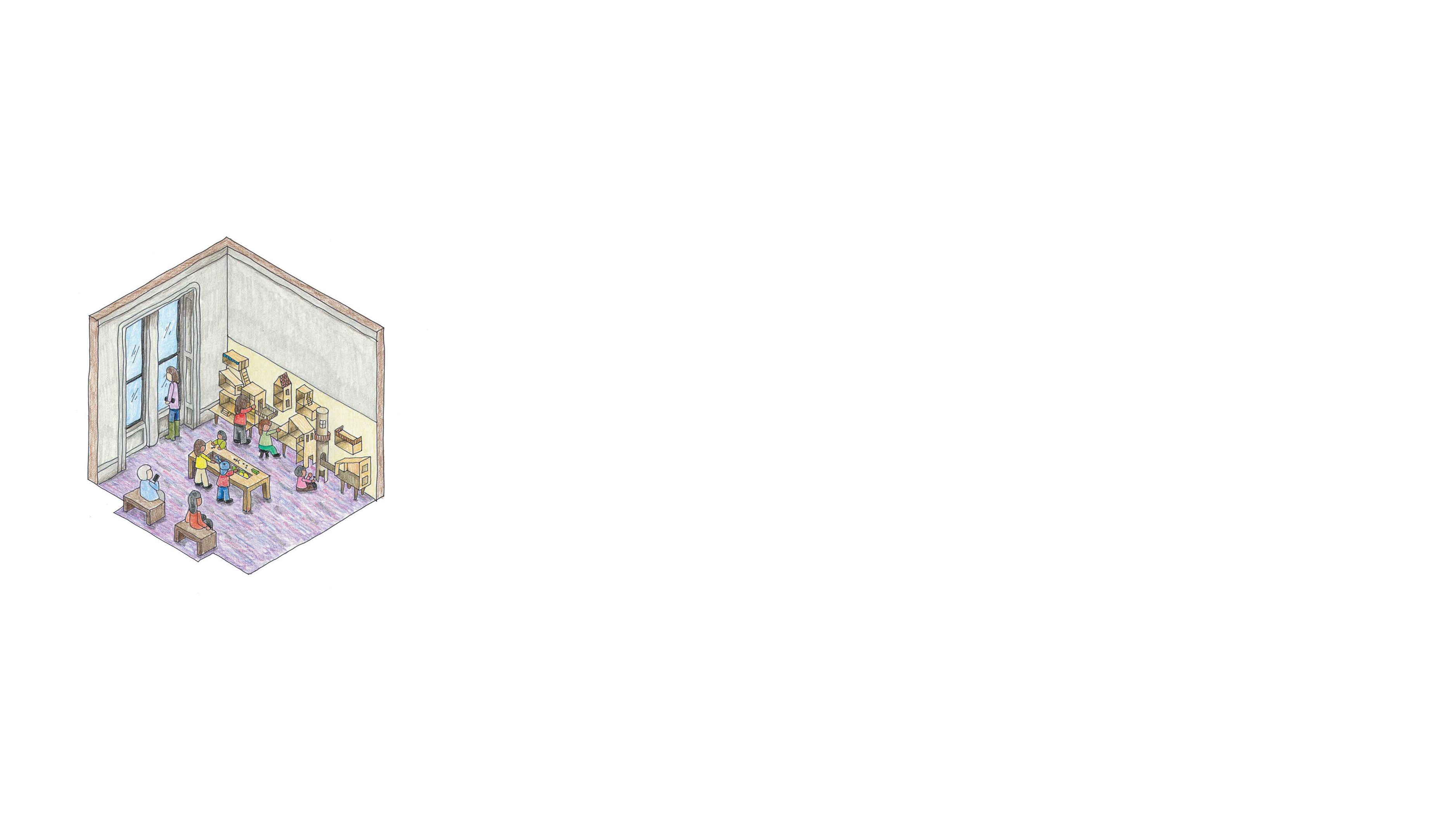
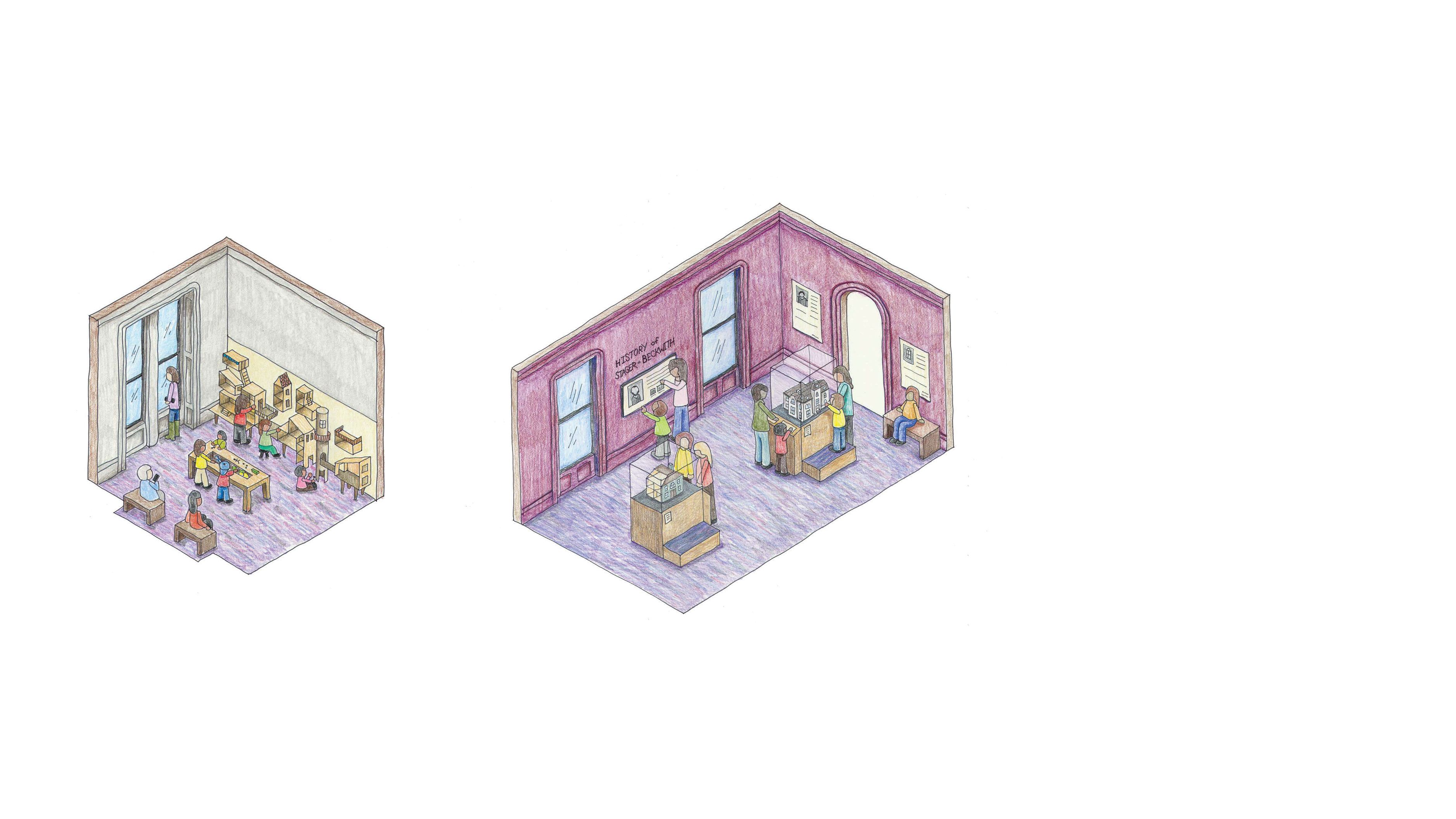
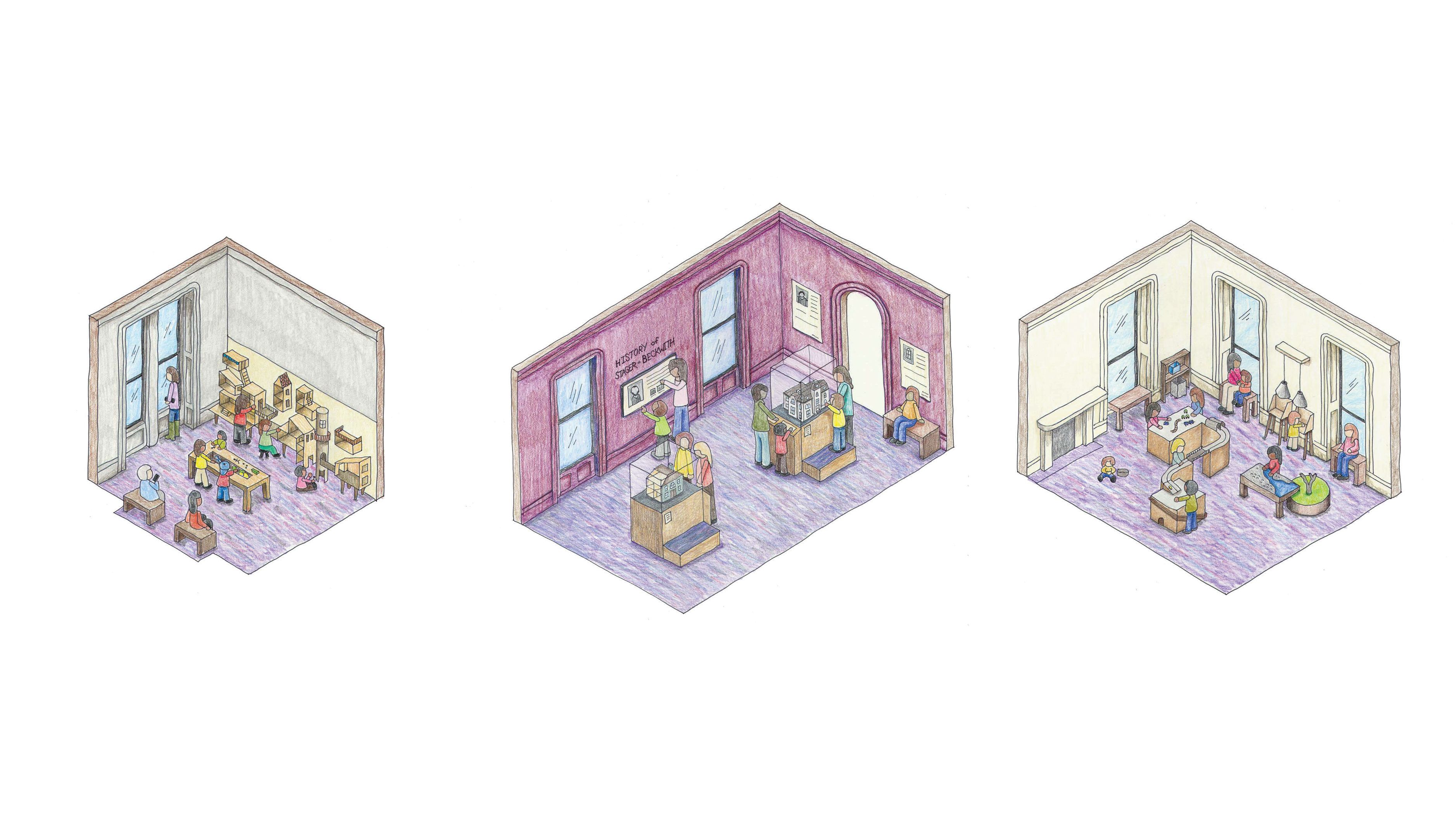
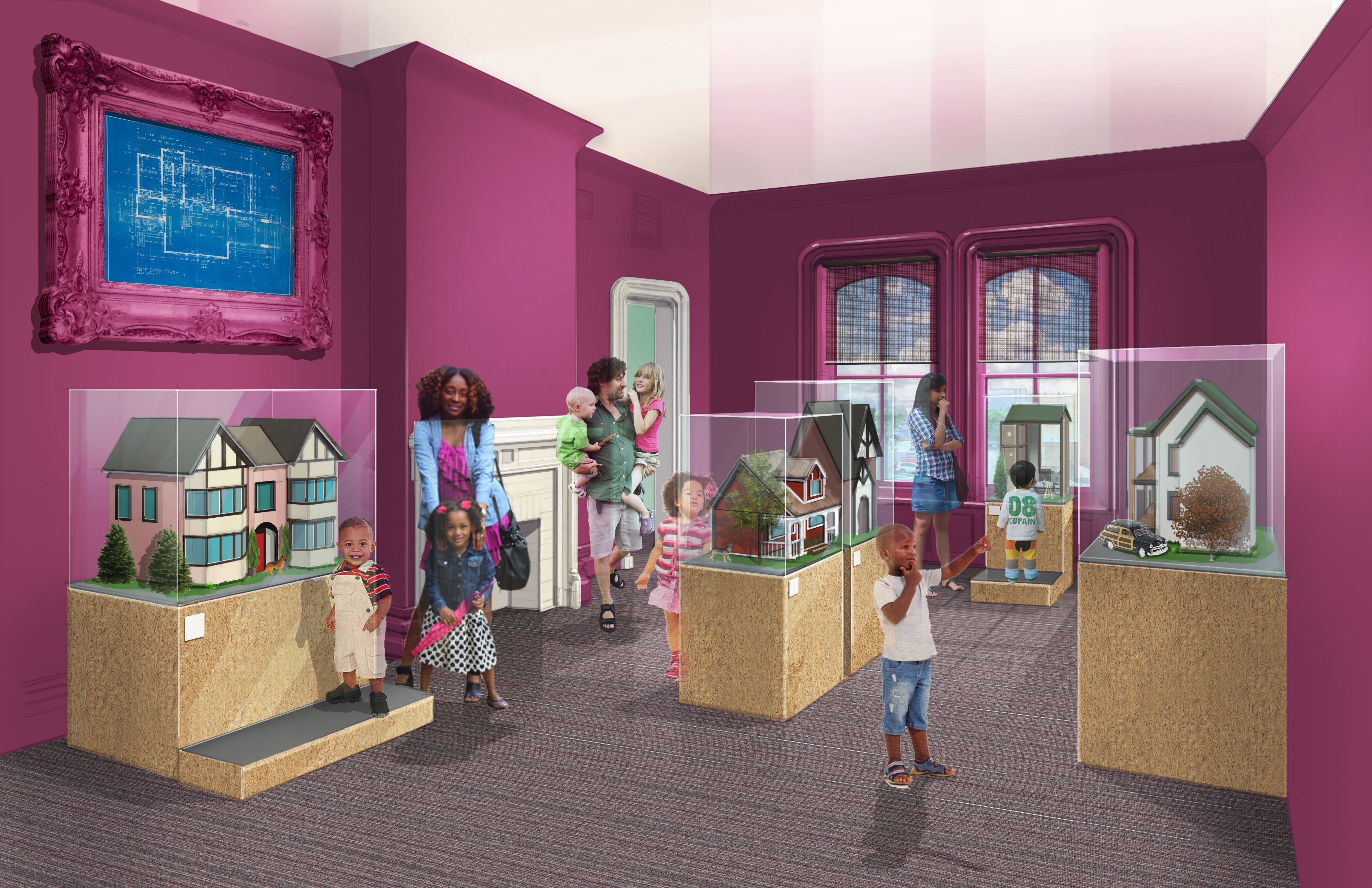
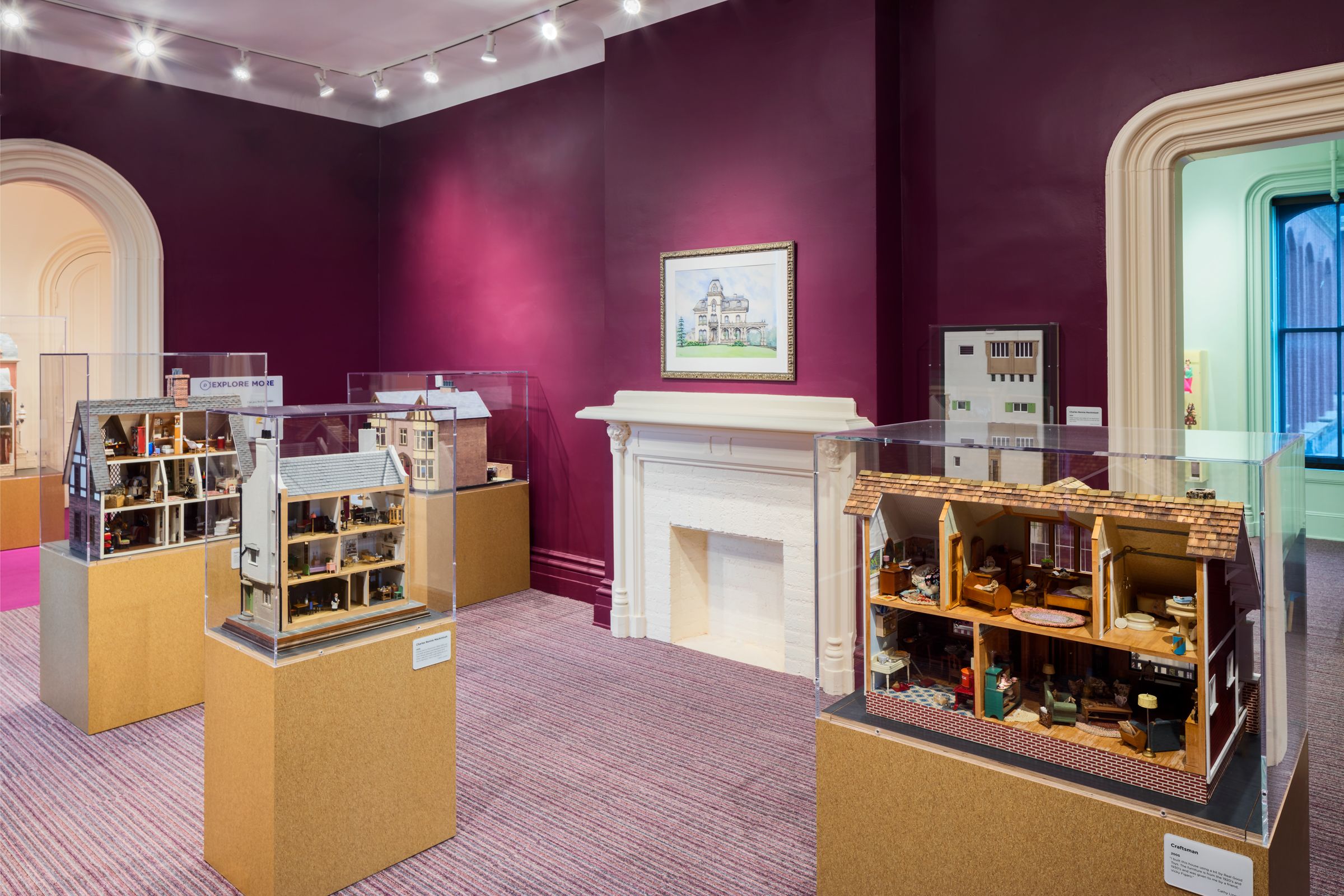
Designing for Play — and for People
Fresh out of grad school, Karen joined the Children’s Museum of Cleveland. In just two years, she’d redesigned the entire museum, introducing new concepts and hands-on learning spaces that resonated with children and parents alike. But it was later — after becoming a mother herself — that her design philosophy truly crystallized.
Her time as a parent deepened her empathy for the children and families who experience her spaces. She joined the board of the Hannah Perkins Center for Child Development, dove into child psychology and early education research, and even completed a UK-based course in play theory. “I started thinking about how kids actually learn,” she says.
“The spaces we create are not just for fun. They’re for building confidence, solving problems, and learning how to interact with the world.”
Two Guiding Principles
Out of this research and life experience came two guiding ideas:
Let Them Play — Create environments that don’t prescribe every action but instead encourage curiosity, experimentation, and self-direction.
The Children Built It — Use materials and forms that feel approachable, imaginative, and even a little imperfect — as if a group of kids had constructed it themselves.
These principles mean that a play kitchen isn’t just a scaled-down appliance set — it’s a stage for storytelling. A climbing structure isn’t only for exercise — it’s a mountain, a bridge, a ship, or all three in a single afternoon. “If you give kids open-ended opportunities,” Karen explains, “they’ll surprise you every time.”
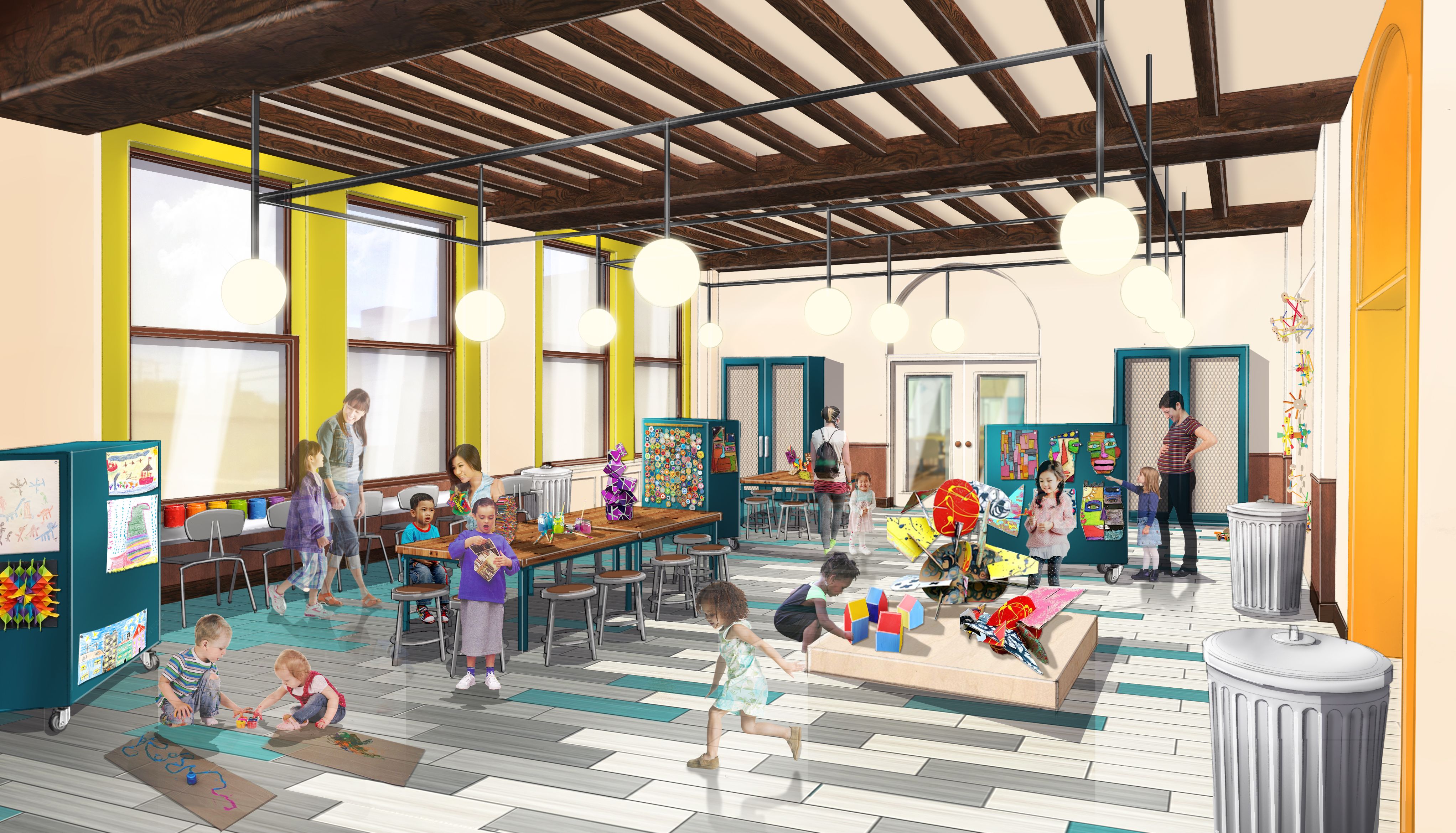
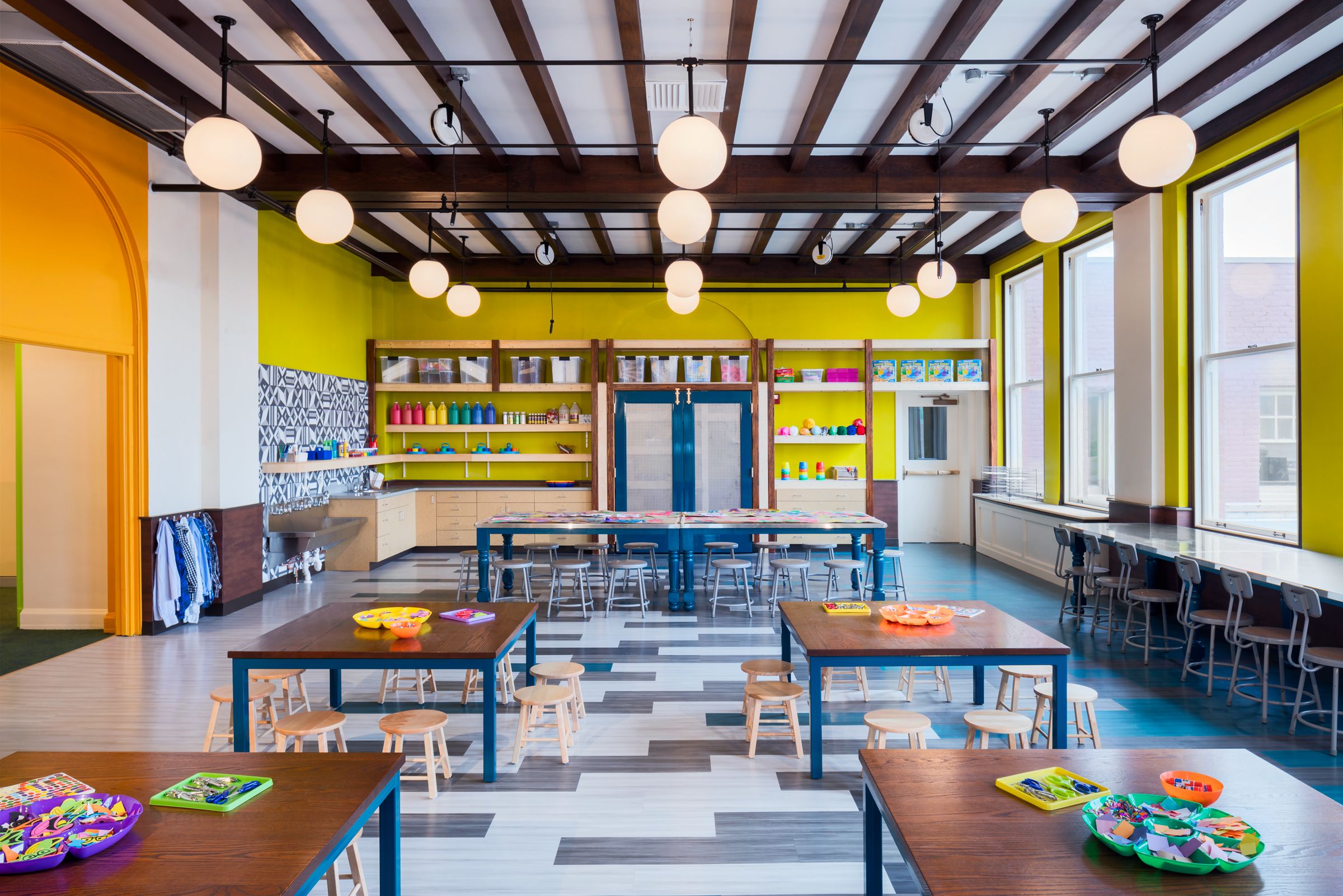
A Meeting of Minds
Karen’s first collaboration with Richardson Design came during the planning for the Children’s Museum of Cleveland’s new home in an historic mansion on Cleveland’s former “Millionaire’s Row”. She led the exhibit design, while AODK Architects handled the building. Richardson Design was initially tapped for finishes and materials — but that quickly expanded.
Designer Tracy van der Kuil remembers the shift. “When we saw Karen’s drawings, it was clear she had a complete vision,” Tracy says. “We could bring our expertise in materials, colors, and branding to support that vision. It was seamless.”The result was the Urban Explorer concept, which draws parallels between exploring the city as one would a park. The exhibits incorporated industrial inspired elements including raw wood, metal, and simple geometric forms alongside bold, child-friendly colors and graphics — all connected by a story that encouraged exploration and discovery.
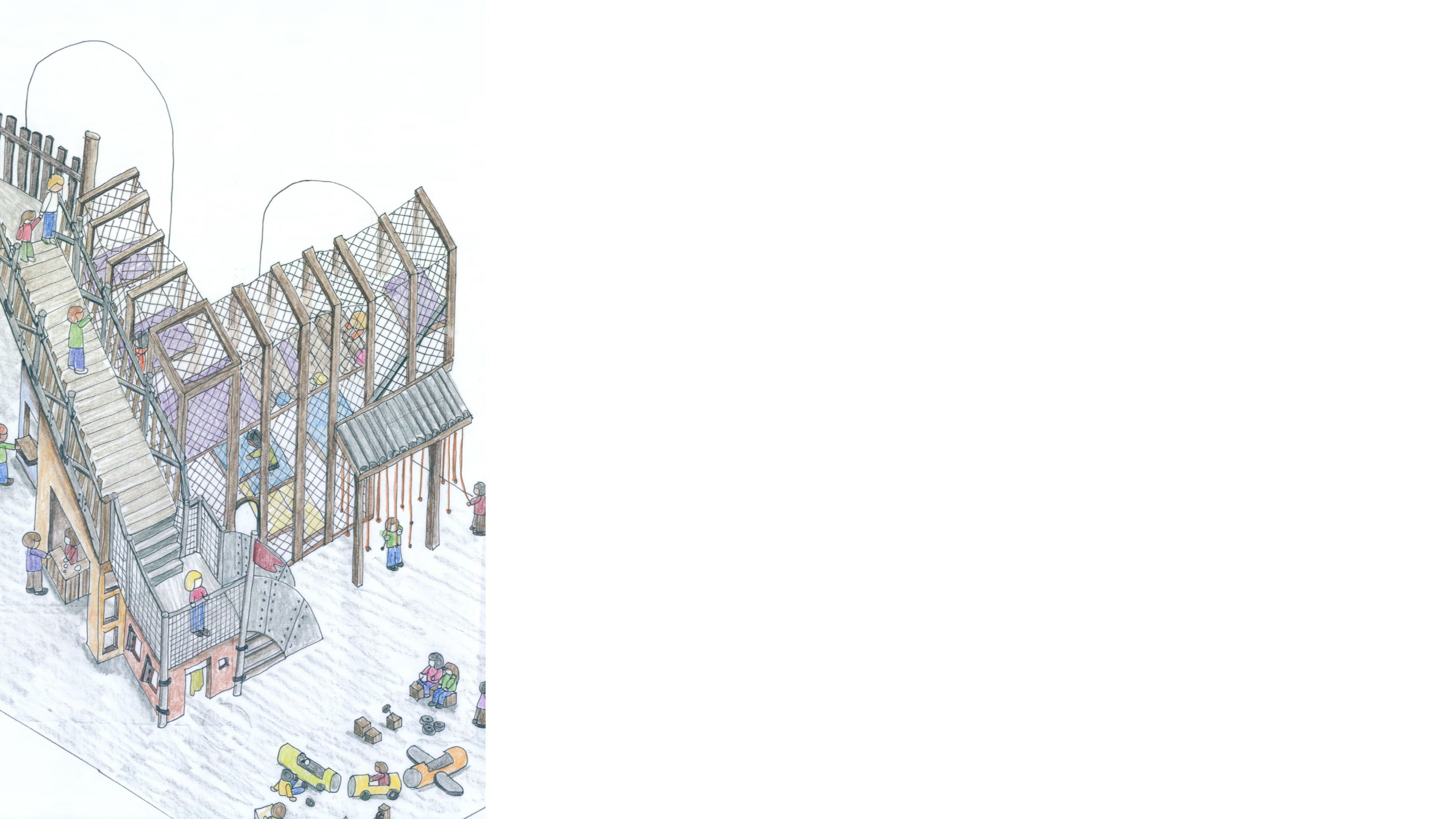
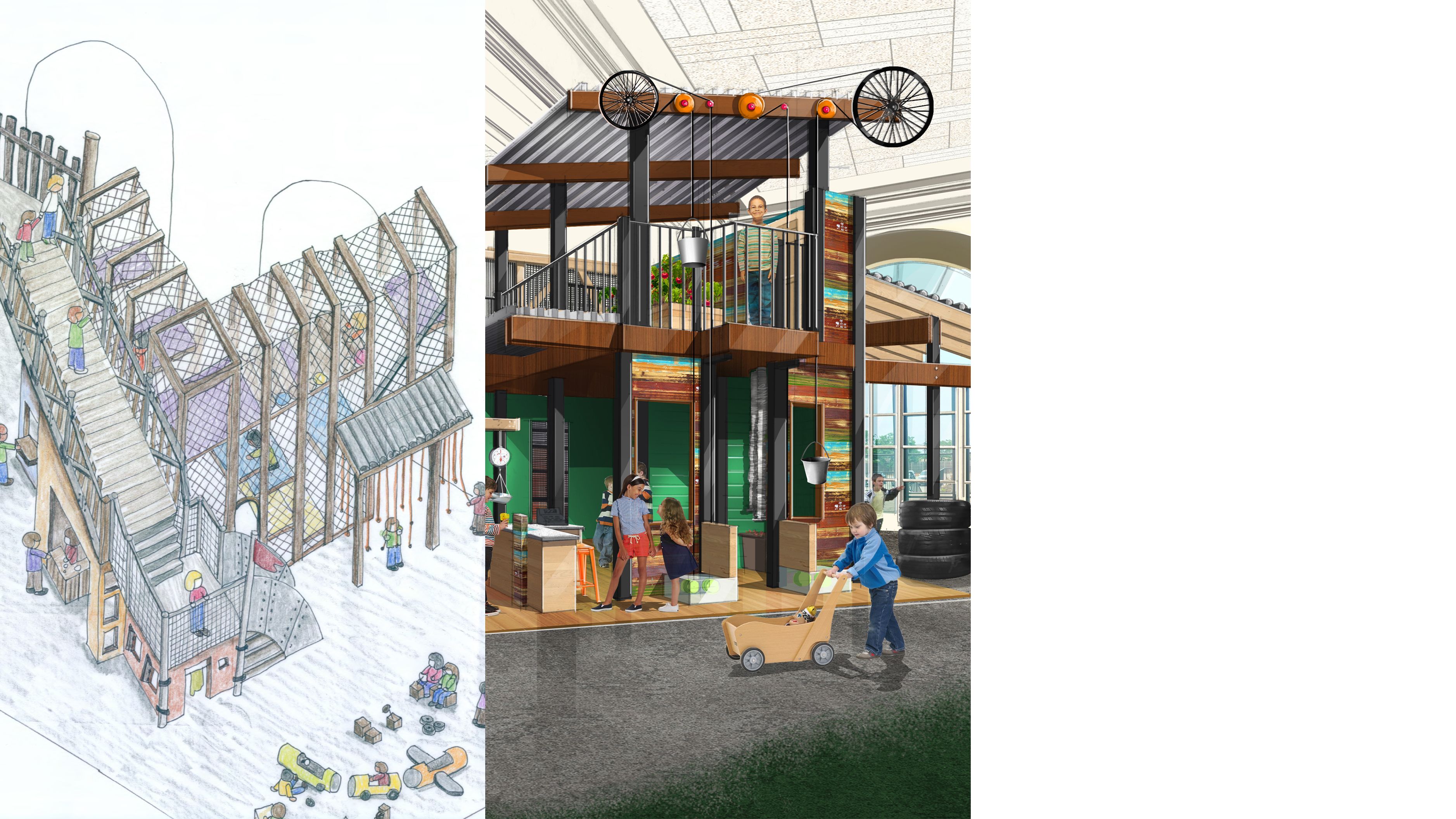
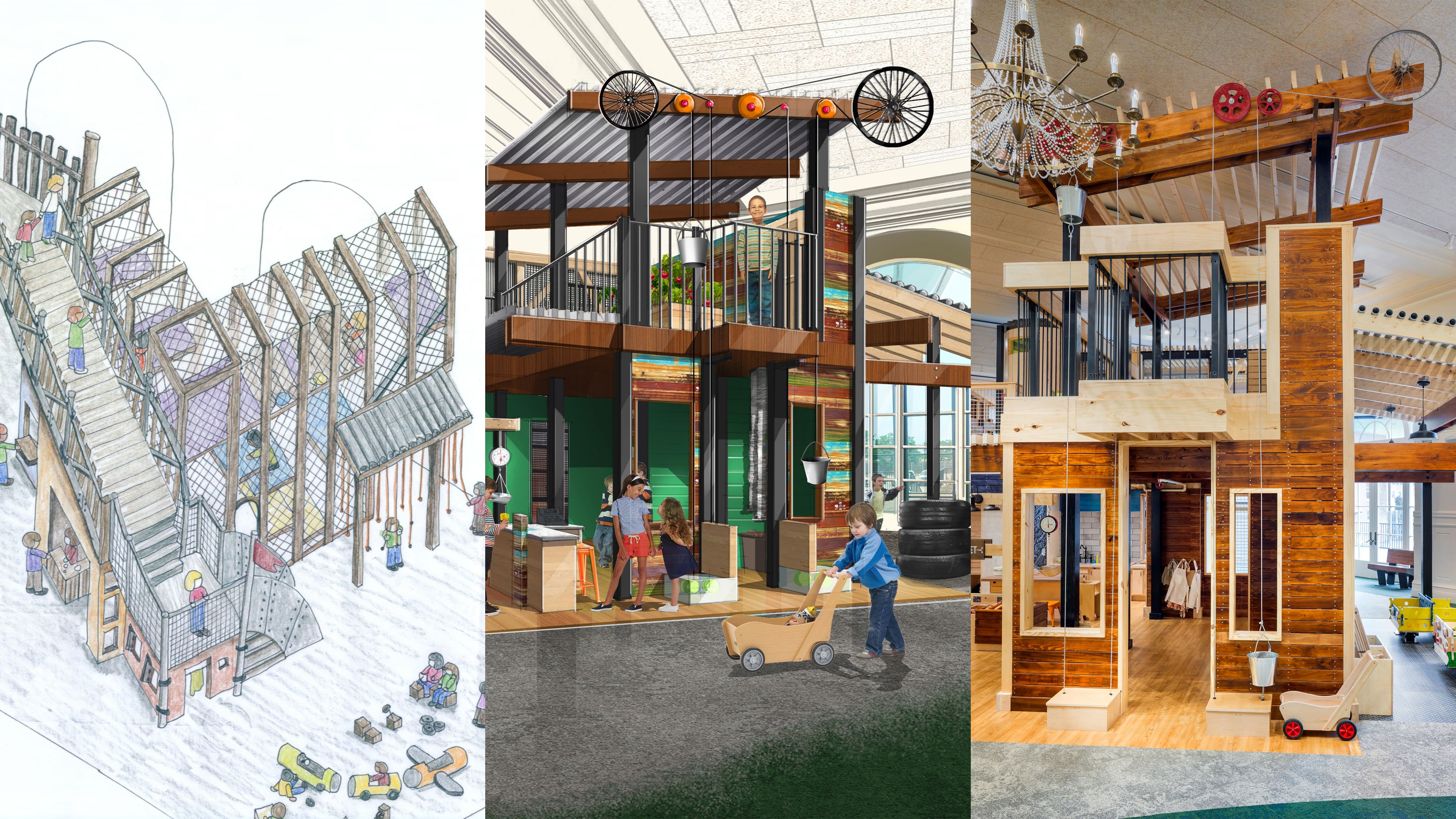
Trust, Clarity, and Collaboration
What began as a single project turned into a creative partnership that’s now lasted nearly a decade. Together, Karen and the Richardson team have worked on the Great Lakes Science Center’s Handle with Care exhibit, the Mighty Museum in Chillicothe, the Maltz Museum of Jewish Heritage, and more.
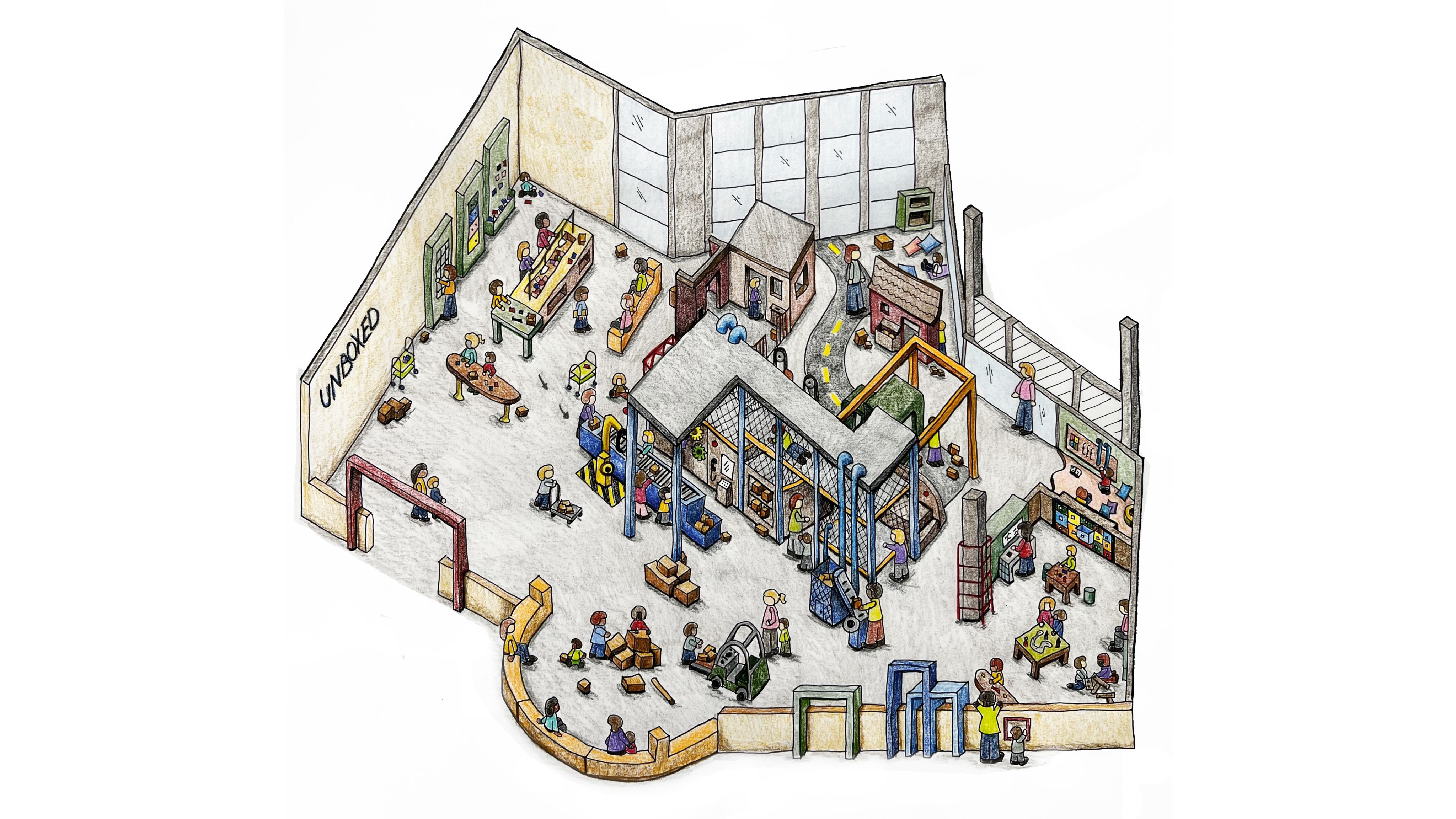
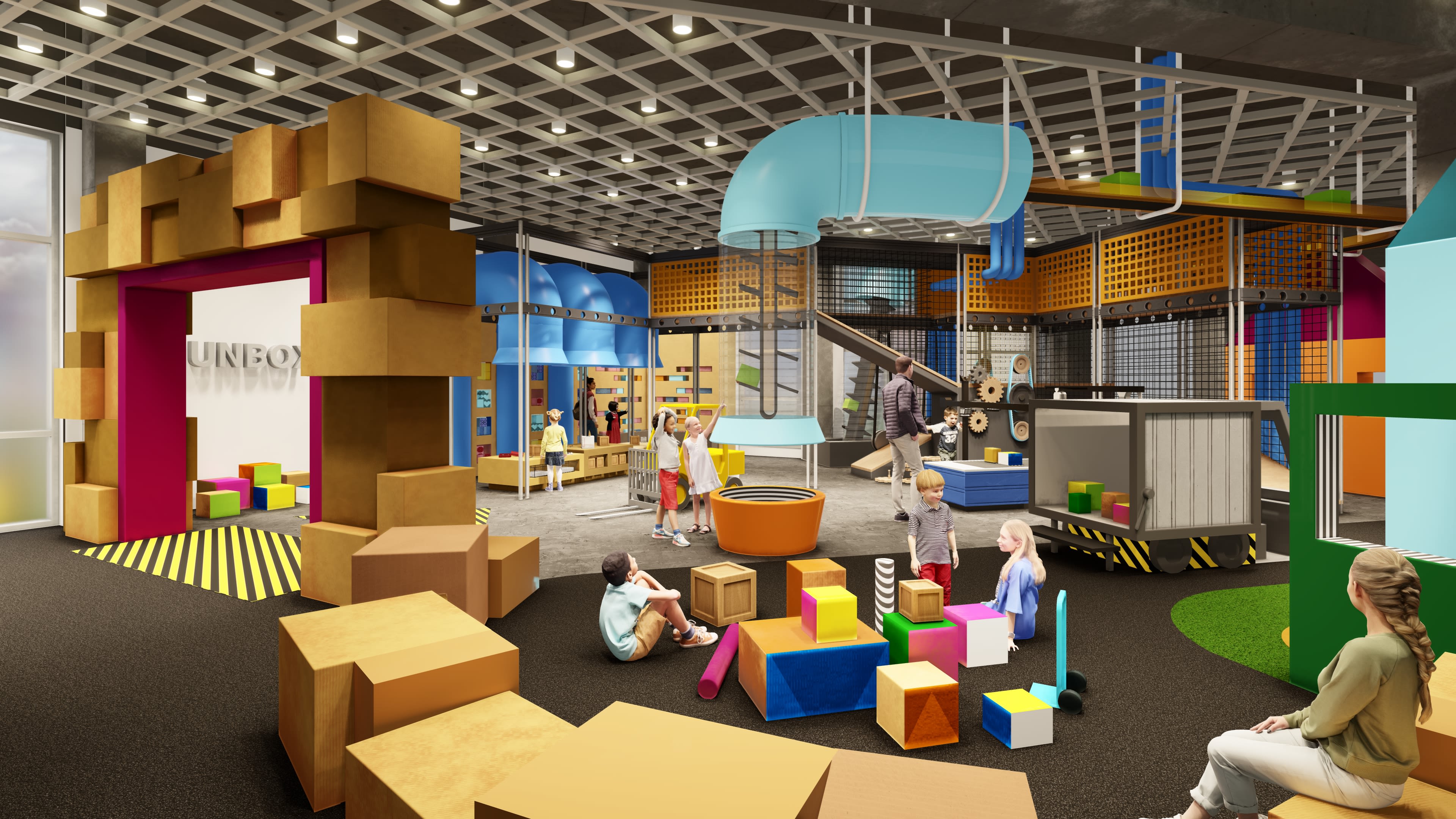
HANDLE WITH CARE EXHIBIT
GREAT LAKES SCIENCE CENTER
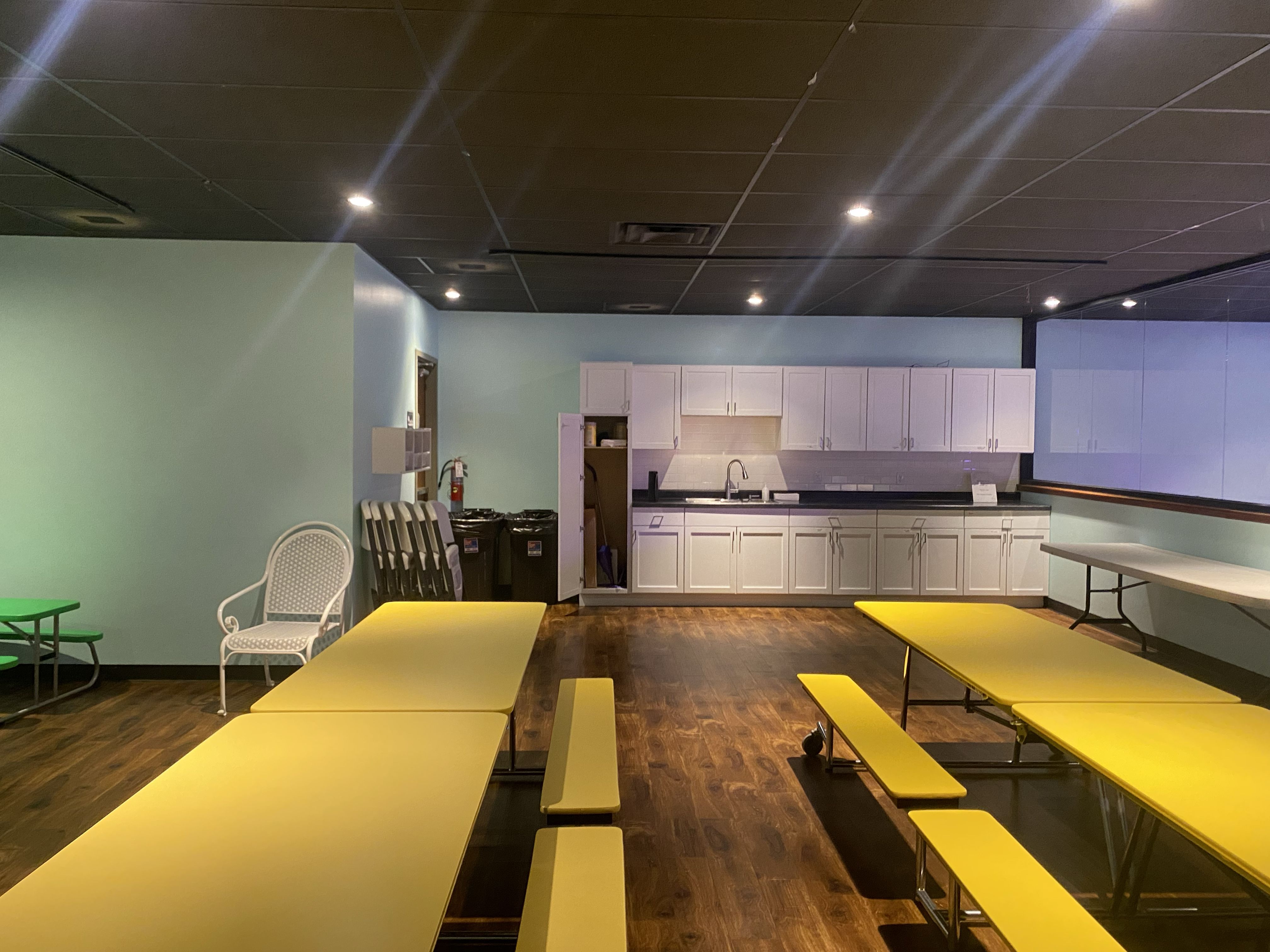
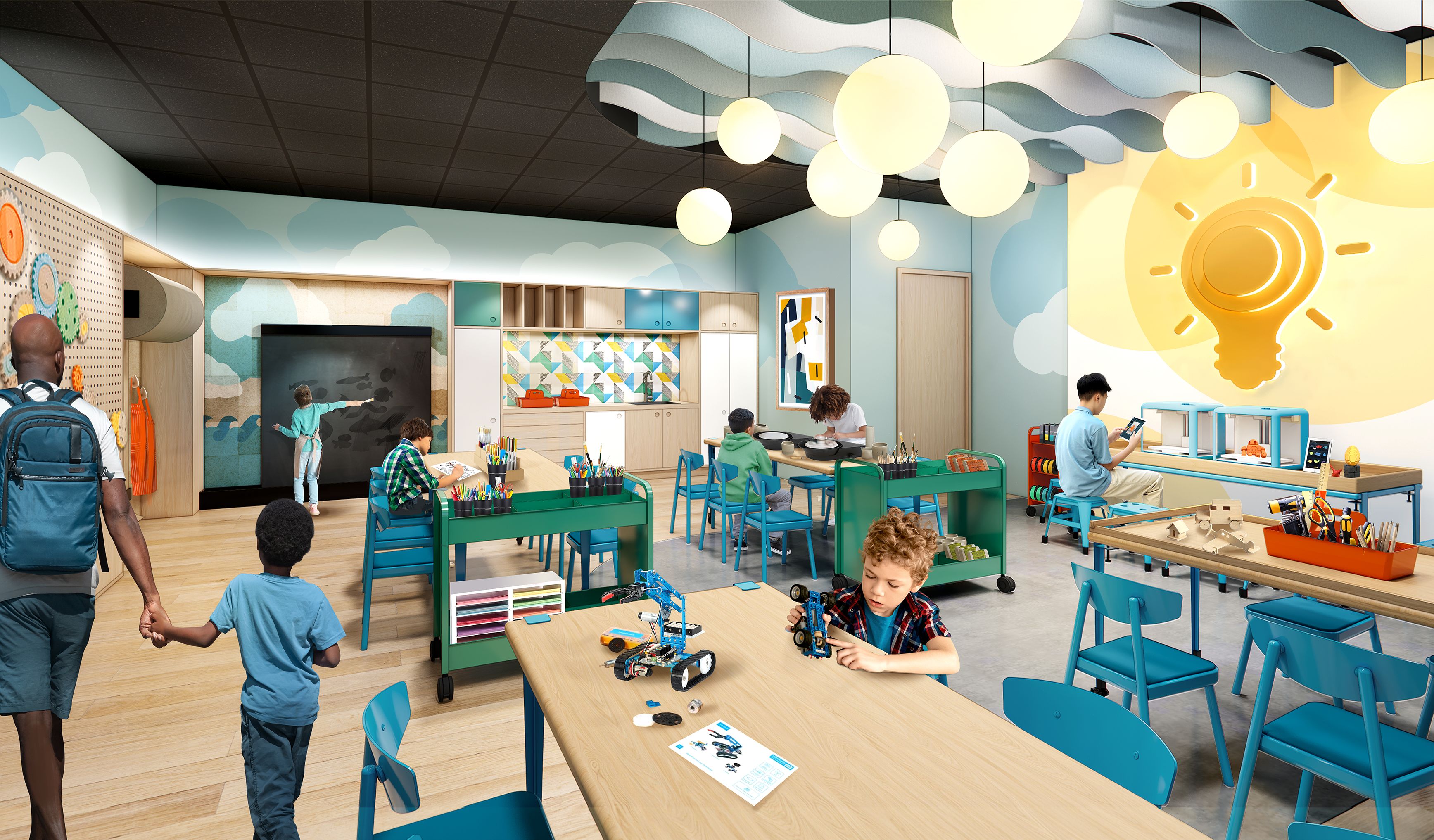
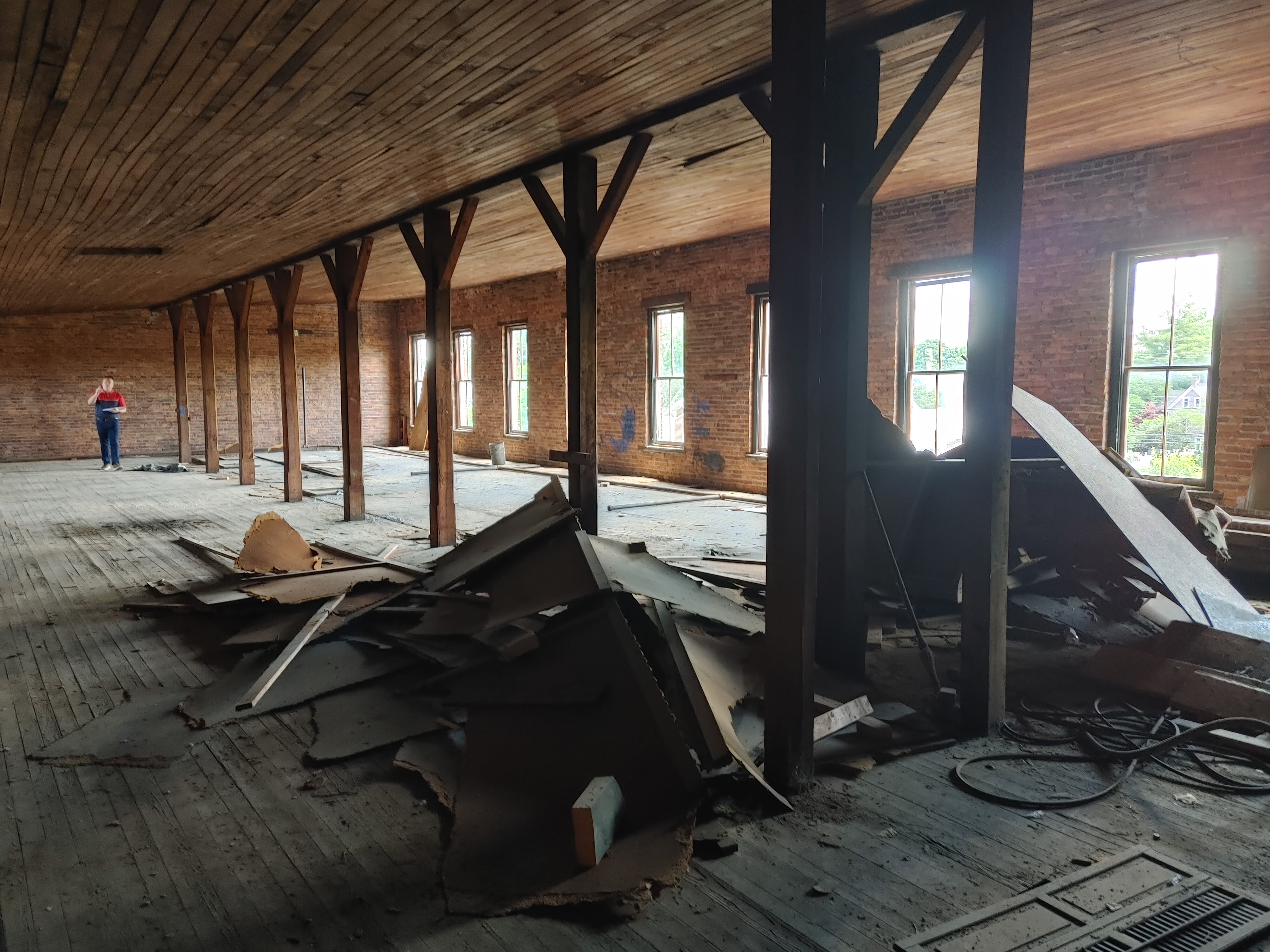
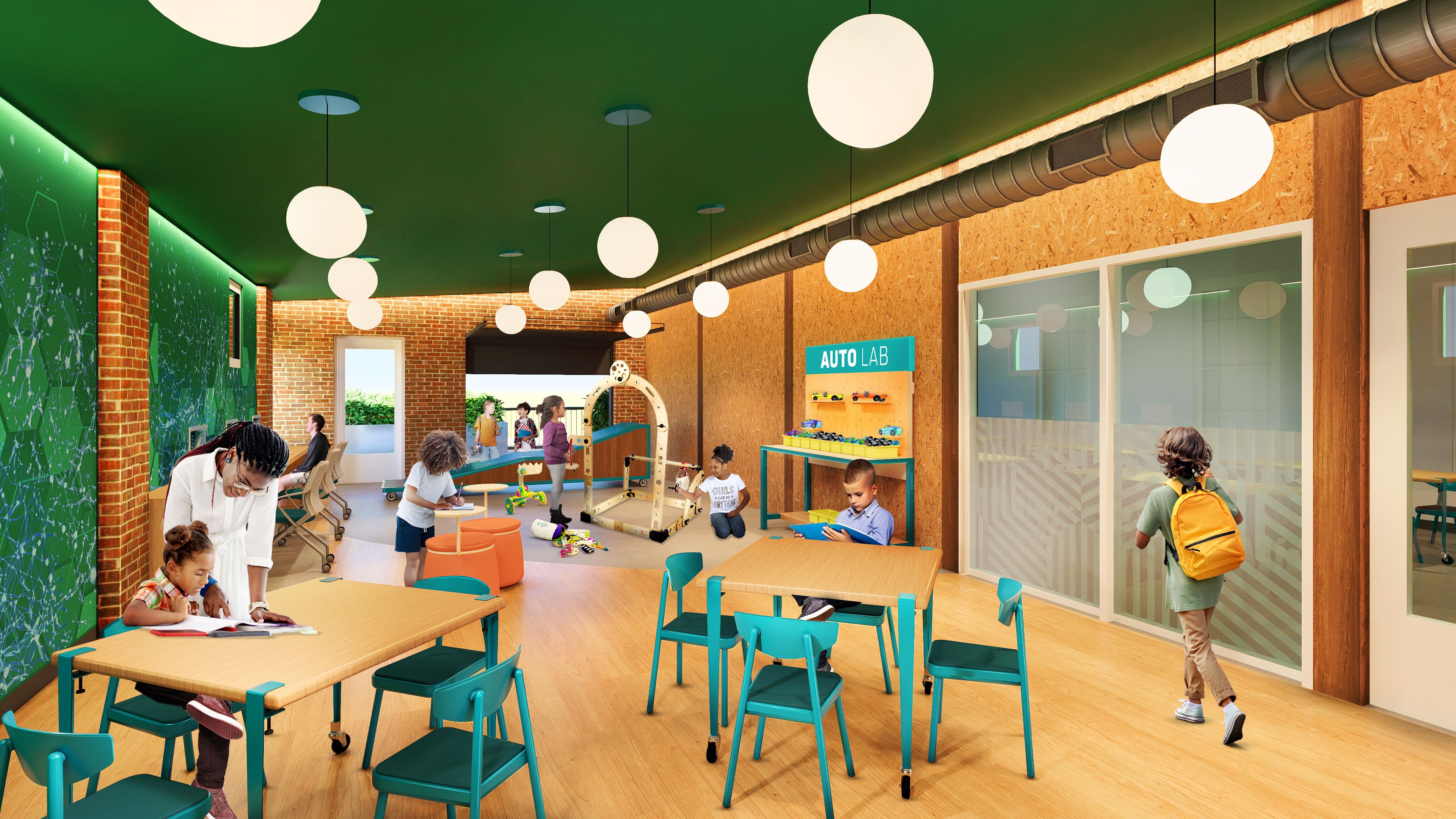
THE MIGHTY MUSEUM
CHILLICOTHE, OH
(BEFORE)
(BEFORE)
Tracy says the key to the relationship is Karen’s leadership style:
“She listens. She asks insightful and challenging questions. She lets people do what they do best. And she trusts the process — even knowing that not everything will go perfectly.”
Karen likens her role to that of a conductor: she brings in specialists, keeps the tempo, and ensures the final composition stays true to the vision. “I love the orchestration,” she says. “Everyone’s working on their piece, but I’m making sure it all connects.”
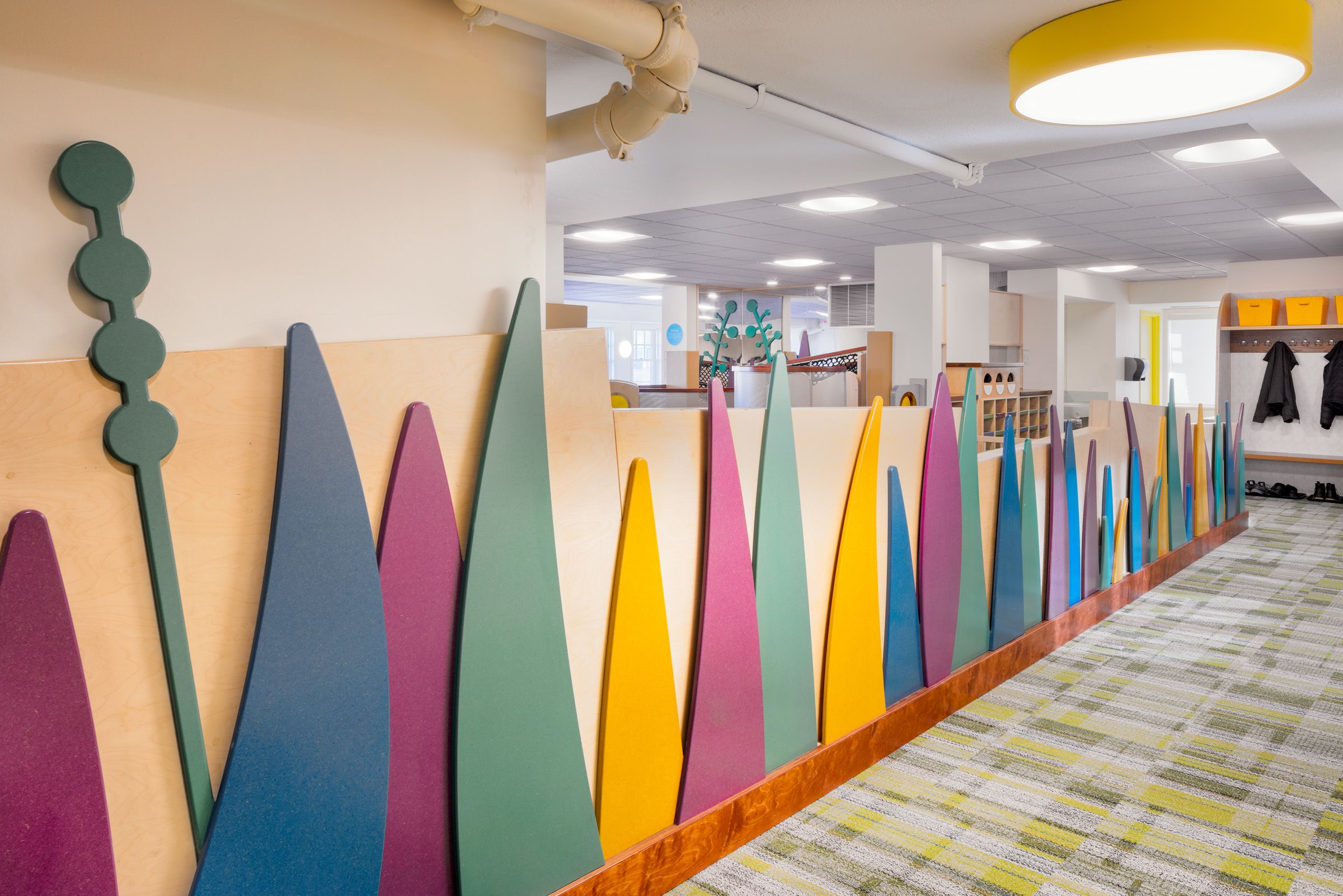
Beyond the Project Brief
Karen’s collaborations with Richardson Design go beyond just delivering a beautiful space. She and Tracy often begin with an informal exchange of inspiration — sharing sketches, mood images, or even quick FaceTime calls to test ideas. “We can have a half-formed thought and know the other person will get it,” Tracy says. “That’s rare in this industry.”
That shared shorthand means they can move fluidly between projects and disciplines, from exhibit design to branding to spatial planning. And it means that each project carries the imprint of both Karen’s child-centered vision and Richardson Design’s aesthetic and technical expertise.
The Human Side of Design
For all her research, process, and artistry, Karen never loses sight of the people at the center of her work — the kids who will explore, the parents who will watch, and the communities that will gather.
“She’s reserved at first,” Tracy notes, “but once you know her, you see how much she cares about making things meaningful. She’s not just designing for play. She’s designing for connection.”
That mindset is why her work feels personal — whether she’s creating a climber inspired by Cleveland’s bridges or a hands-on exhibit that travels from museum to museum. It’s also why her partnerships, like the one with Richardson Design, endure.
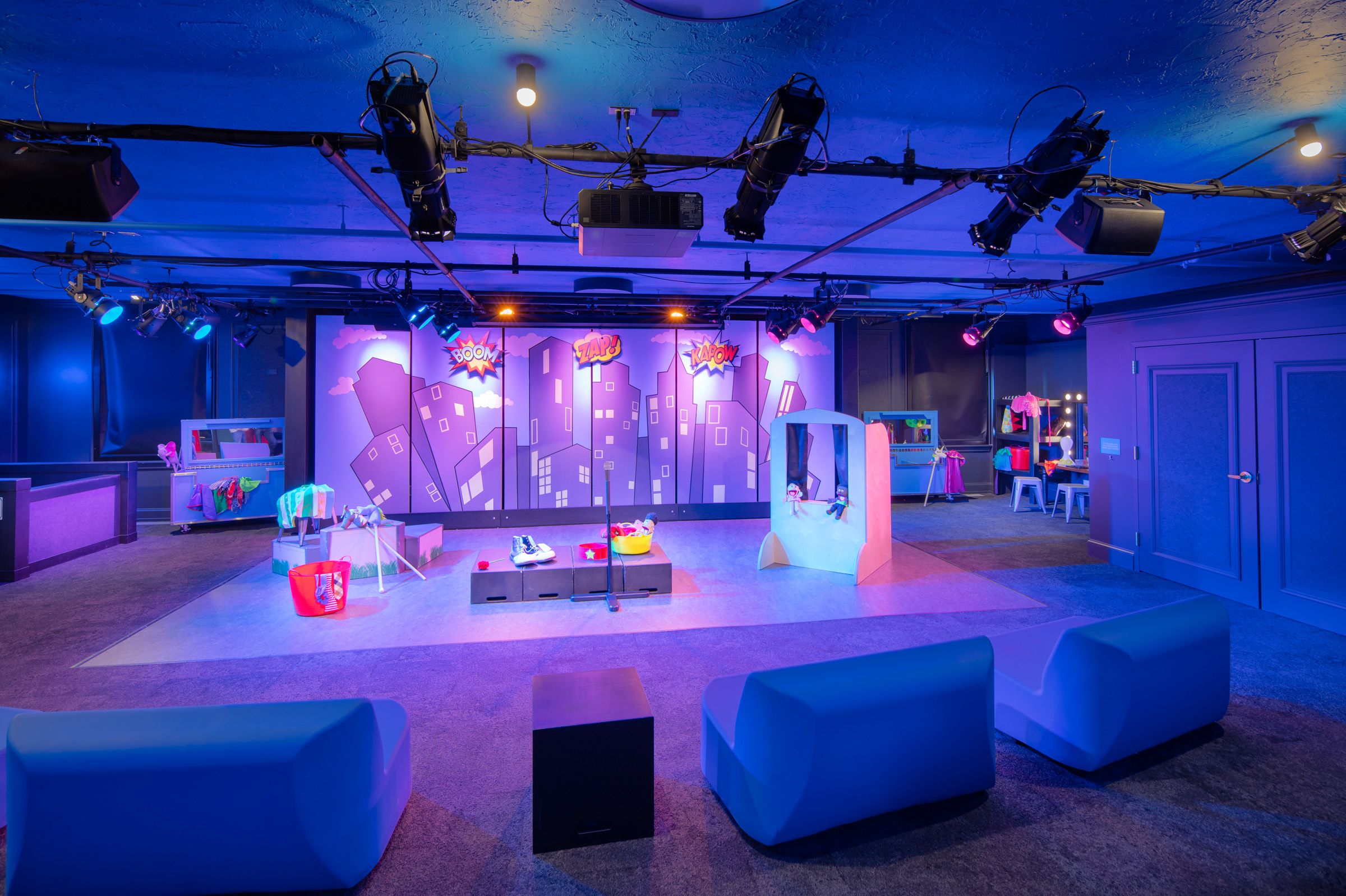
A Shared Commitment
Ask Karen what she values most in a collaborator, and she’ll tell you: trust, respect, and a willingness to share ownership of ideas. It’s no coincidence those same qualities define her partnership with Richardson Design.
“It’s rare to find people who bring as much passion and skill to the table as you do.”
With Tracy and the team, I know we’re all working toward the same thing — creating spaces that inspire.”
For Richardson Design, the feeling is mutual. Karen Katz isn’t just a client — she’s a creative ally, a thought partner, and a friend. Together, they’ve built more than exhibits. They’ve built a shared way of working that proves the best spaces are made when vision and trust meet.
A Design Company Based on Vision and Trust
Over the last 30 years as a Cleveland design firm, our formula for a successful relationship includes:
+ Intentional Curiosity
+ Trust in Team
+ Respectful Collaboration
+ Commitment to Vision
All great partnerships start with a conversation. Connect with the Richardson Design team to share your vision here.
Photography Credit:
Sean Phillips / Mark Steele
Any additional photography used in this project is property of its respective owners.






